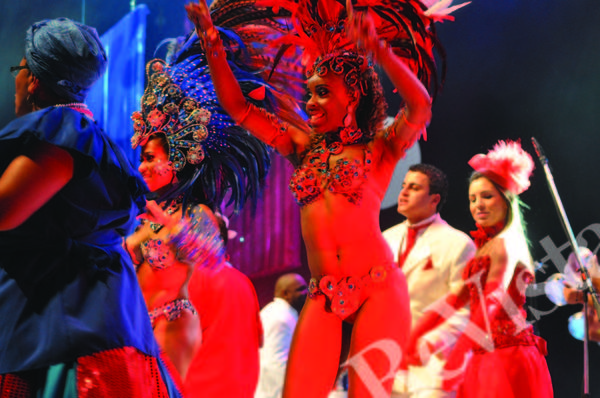Sensual Not Beautiful: The Mulata as Erotic SpectaclePosted in Articles, Brazil, Caribbean/Latin America, Communications/Media Studies, Media Archive, Women on 2019-07-11 17:46Z by Steven |
Sensual Not Beautiful: The Mulata as Erotic Spectacle
ReVista: Harvard Review of Latin America
Spring 2017 (Black is Beautiful)
Jasmine Mitchell, Assistant Professor of American Studies and Media Studies
State University of New York, Old Westbury
 The iconic mulata female body is portrayed in Brazil as glistening brown. Photo courtesy of Jasmine Mitchell. |
While white actresses and models still dominate beauty and fashion magazines in Brazil, on my last few visits to Brazil, I’ve noticed that actresses of African descent such as Camila Pitanga and Taís Araújo have also graced the covers. Since 2009, both actresses have also starred in telenovelas. Miss Brazil 2016 is the first black winner since Deise Nunes’s crowning in 1986. The 2016 competition had the largest number of black candidates in its history. The dominant conceptualizations of beauty in Brazil are shifting. Erika Moura, the Mulata Globeleza of 2017, did not appear as a bodypainted nude Rio de Janeiro samba dancer, but instead performed in various costumes and dance styles representing a breadth of Brazilian regional cultures.
It’s certainly not been this way for very long. In 2001, on my first trip to Brazil, I yearned to find a refuge, a place where my background as a mixed-race black woman from the United States was neither exotic nor fetishized. Relying on Brazil’s reputed celebration of racial mixing, I believed that it would become my racial paradise in which brown was beautiful and I would find a resistance to the exclusivity of white U.S. beauty norms.
Instead, I became familiar with a Brazilian saying, “Branca para casar, mulata para fornicar, negra para trabalhar (white women for marriage, mulata women for sex, black women for work).”…
Read the entire article here.